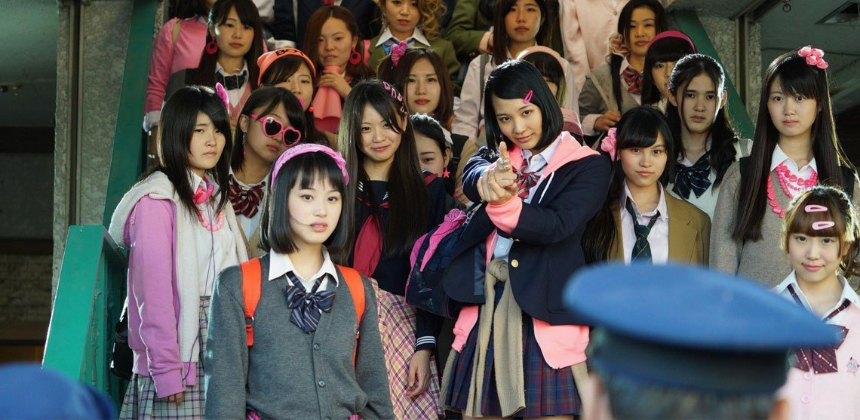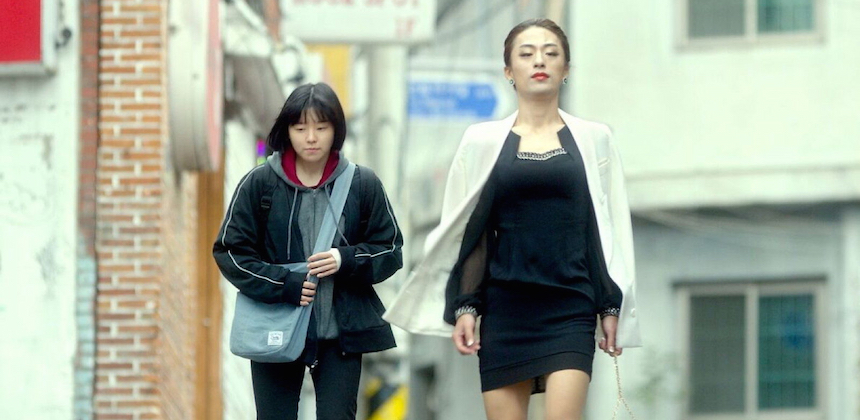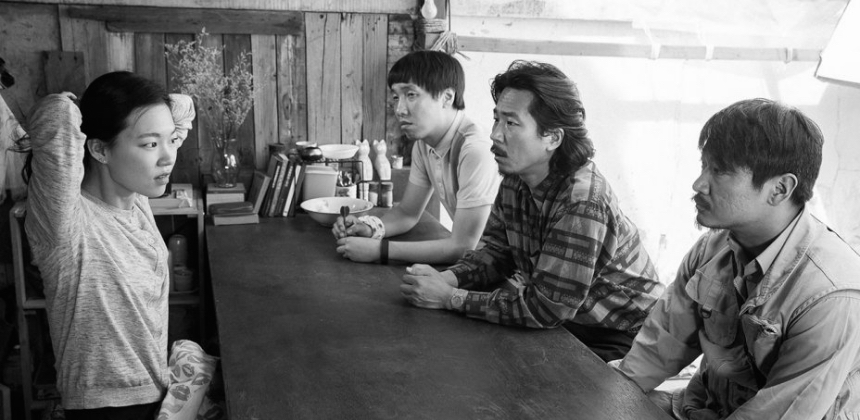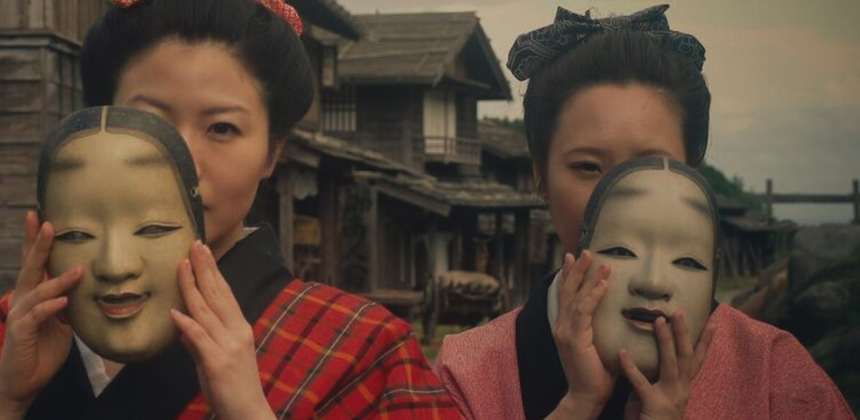Preview: The New York Asian Film Festival Celebrates Sixteen Sweet Years
Lucky New Yorkers, it's that time again when the good folks at Subway Cinema bring us the New York Asian Film Festival, a superior alternative to bombastic multiplex fare, and a one-stop shop for the latest and greatest of the innovative works from all across Asia. As usual, an almost overwhelming variety is on offer, running the gamut from distinctive takes on familiar genres to the truly bizarre and unclassifiable.
The festival runs from June 30 through July 16 at the Walter Reade Theater and the SVA Theatre. Dustin Chang and I have selected 10 films that you should especially look out for. Click through the gallery below for our takes on these.
Dustin Chang
contributed to this story.










Japanese Girls Never Die
With its intentionally jumbled chronology, Japanese Girls Never Die goes on to tell the story of Haruko (Aoi Yu), an aimless 27 year old who works at an office and still lives at home. Then there are accidental graffiti artists and an anarchic High School girl gang on a crime spree, beating up unsuspecting men subplots. In series of flash forwards, we learn Haruko that hooks up with a grocery store clerk/childhood playmate, Soga (Ishizaki Huey). She has to deal with daily sexism at the work place - hearing male superiors shit talking a 35-year old, unmarried female co-worker and constantly being asked whether she has a boyfriend, then told she won't have problems getting married because of how she looks. They even say to her point blank that they'd rather hire a 18 yr old girl with no experience rather than a male applicant with experience because they have to dole out more money for a male worker.
Then she goes missing. Yukio and Manabu, two 20 yr olds working dead end jobs and Aina (Takahata Mitsuki), a slightly pumped up version of a cutesy Japanese girl - blinged out cell phone and a gaggle of flush toys on her car dashboard -- start stenciling Haruko's face from the police missing sign all over the neighborhood. The image goes viral and gets tied into the violent crimes perpetrated by the girl gang. In her absence, Haruko becomes a unwitting heroine of a movement.
Japanese Girls Never Die is a strong indictment of the society where girls are subjugated and sexualized at an early age. It's a structurally daring, thought provoking work. Aoi Yu, the baby faced star of millennial classics like All About Lily Chou-Chou and Hana and Alice does a great job, carrying the burden of being a twenty something female in society where self-worth is hard to come by. It's crazy to think that Aoi is old and therefore can easily be discarded. What kind of world is this? Even though it's more than a decade apart from each other, it would make a great double feature with Kurosawa Kiyoshi's Bright Future. -- Dustin Chang
Jane
This is a sensitive and perceptive portrayal of some of society’s most marginalized, vulnerable, and exploited – in this case, transgender people and teenage runaways. The two central characters are So-hyun (Lee Min-ji), a teenage runaway girl, and the titular Jane (Gu Gyo-hwan), a transgender nightclub performer. They first meet when Jane saves So-hyun from a suicide attempt after So-hyun is abandoned by her boyfriend. Jane serves as a sort of den mother to So-hyun and a few other runaways at her home; they refer to each other as “family,” an alternative to the real families they ran away from.
However, when a tragic occurrence early in the film breaks up the “family,” So-hyun finds herself in a different “family,” one far less supportive and nurturing, and she must fearfully navigate through her new circumstances, and find a way to survive and eventually escape.
Jane freely navigates between present and past events, truth and lies (So-hyun is established at the start as not always truthful), reality and fantasy. As such, its ambitiously ambiguous and fractured narrative structure sometimes causes the film to get in its own way, and obscures some of the stronger elements that may have been better highlighted with a more straightforward approach.
Nevertheless, Jane remains a strong effort, largely due to its clear empathy for its characters, and its skilled performances, especially Gu Gyo-hwan as Jane. -- Christopher Bourne
Wet Woman in the Wind
Kosuke (Nagaoka Tasuku), a recluse playwright who swore off women and the city life, leads a solitary life in a tiny shack in the woods. He witnesses Shiori (Mamiya Yuki) impulsively plunging into the sea with her bike. Is she nuts? She then takes off her wet top, dries it and puts it back on again in front of him. "I'm on to you," she says. So starts Wet Woman in the Wind, the first of five films from Nikatsu Studio's planned Roman Porno revival.
Kosuke violently rejects the advances of energetic, unrelenting Shiori who throws herself into his life every chance she gets. She makes his rare interactions with others all the more tense and difficult. Their physical cat and mouse rough and tumbles are interrupted, then exacerbated by Kosuke's admiring city theater troupe dropping in, causing more chaotic sexual escapades.
Shiota Akihiko's 'pinku' movie is a dutifully low budget, short sex-comedy, obeying its original Roman Porno rule with sex every ten minutes. So the sex scenes are aplenty, including threesome and lesbian sex. Mamiya, topless most of the time, is a firebrand. Shiota makes most of the two leads' energy with his long takes. Sunny and light, Wet Woman... is good times. -- Dustin Chang
Dawn of the Felines
Another Nikkatsu Roman Porno Reboot entry, Dawn of the Felines pays homage to an earlier film of the genre, Noboru Tanaka’s Night of the Felines (1972). While that earlier film was a comic sex romp, Shiraishi’s version is a far more downbeat and decidedly de-glamorized look at the sex-worker industry, seen through the eyes of three women who work at a seedy escort agency in Tokyo. These women – a Belle de Jour type married woman, an abusive single mom, and a young homeless woman – offer varied and lively portrayals of sex workers that admirably avoid the standard clichés of exploited and victimized prostitutes. If these women are victims of anything, it’s the hypocrisy of a society that insist on erecting facades of propriety and respectability, forcing these “felines” – performing an in-demand, indeed necessary service – to live and work in the shadows. -- Christopher Bourne
A Quiet Dream
Korean-Chinese director Zhang Lu's A Quiet Dream falls somewhere between Jarmusch and Hong Sang-soo. Sumptuously shot in black and white, the film revolves around Yeri (Han Yeri), a Korean-Chinese girl, running a small makeshift bar/stall out of her house, supporting her wheelchair bound father, and a trio of good for nothings (Yang Ik-joon of Breathless, Park Jung-bum, Yun Jong-bin) who practically live at the bar. Even though they are very different from each other (Yang- a small time gangster, Park- a quiet North Korean defector, Yun- an idiot with an epileptic fit who happens to be a landlord of Yeri), they all have one thing in common - they are all infatuated with beautiful, kind Yeri.
Yeri playfully responds to their small-time desires, yet delicately maintains this four-way relationship. Boys get jealous of each other but at the end of the day, they are all together, helping each other up. Her unassuming beauty and charm even attracts a local tomboy whose affection she later softly deflects. As the film unhurriedly unfolds, we get to know the background of each character little by little. They constantly talk, drink, smoke and do drunken karaoke.
Zhang is known for portraying the lives of down-and-out foreigners in the margins of Korean society and A Quiet Dream is no exception. He gives focus to their small-time predicaments in life with much empathy and care. Their rootless, lonely existence is presented as an ideal, comfortable place to be. Unlike Jarmusch's interlopers who are constantly on the move, Yeri and the trio are stuck in their tiny haven that they created, living and loving the eternal present. As the title suggests, each of their small scenarios from their day-to-day lives can be seen as a dream. Pleasantly chatty, with beautifully drawn characters, blemishes and all, A Quiet Dream is as comfortable and gentle as your favorite old pair of shoes. -- Dustin Chang
KFC
The festival’s program notes for this beyond-astonishing debut feature begin with a stern, all-caps warning: “WATCH AT YOUR OWN RISK!” Trust me, they’re not kidding. The film itself echoes this sentiment, starting with a lengthy disclaimer on its opening title cards repeatedly stressing that everything we’re about to see is completely fictional and not based on any real story. This is perhaps the filmmaker’s attempt to protect himself from the notoriously censorious nature of Vietnam’s film industry; his film prevented him from graduating from Hanoi’s film school, as his script was deemed too violent.
A roundelay of extreme depravity among several characters on the streets of Hanoi, Kfc assaults viewers with the kind of body horror that would make David Cronenberg queasy: cannibalism, necrophilia, torture, dismemberment, flesh-eating worms. These sights are accompanied with a mercilessly precise sound design that brings home every squish, cut, and slash with visceral immediacy.
However, despite the extreme imagery, this is no mere exploitative exercise. Its narrative is delivered via a cleverly intricate structure of nested flashbacks and flash-forwards, and the serious-minded nature of its depictions of characters who are slaves to their basest impulses lets us know that its creator isn’t just out for kicks or cheap thrills, but actually has something to say about the human condition.
Truly not for the faint of heart or stomach, the film’s biggest act of mercy toward its audience is that it only lasts barely more than an hour. -- Chritopher Bourne
Bamseom Pirates: Seoul Inferno
Just to give you a little bit of background here: South Korean president Park Geun-hye was impeached, then indicted on corruption charges in March 2017, ending a decade of right wing regimes that started with Lee Meung-bak, a former CEO of Hyundai Construction in 2008, who had maintained a hardline on North Korea while not doing much for a stagnant economy. The nation's youth, directionless and hopeless about their future, armed with social networking tools, riled up against the rigid, highly hierarchical, money hungry society.
Bamseom Pirates, a grindcore duo consisting of Kwon Yong-man (drums, vocal) and Jang Sung-gun (bass, vocal) made a splash in the underground music scene with their unintelligible shouting of songs accompanied by pure noise that lasts barely one minute each. In a pure punk spirit, in order to criticize highly capitalistic, anti-commie regime, they used images (dated North Korean propaganda they found on the internet, in a crude Power Point presentation) and lyrics praising North Korea and its cult leaders in an ironic fashion in their songs. Director Jung Yun-suk follows the band around and records their gigs in abandoned university buildings, at anti-establishment demonstrations, on the streets and in small venues.
Seoul Inferno refers to the North Korea's fiery rhetoric where they were describing that if there is a war, there will be an inferno in Seoul in a matter of minutes, since the city is less than 30 miles away from the border. It was the title of their first album in 2010, with titles like "All Hail, Kim Jung-il" and so on.
They get in trouble when their producer Park Jung-gun gets arrested for breaking the National Security Law, for tweeting some ironic pro-North Korean slogans. During the trial, Kwon, who has to take the witness stand, has to confront many of the political implications of the music Bamseom is making. They are questioned about the band's identity. In their minds, the South and the North are not that different. They are like piss and shit. Same difference. Now try to imagine explaining this to your suit wearing defense lawyer.
Bamseom lasted about 5 years. They announced that they were disbanding on their Facebook in 2016. Just like every underground punk band, it's the youthful rebellion that matters the most. No matter their political beliefs or their stance, it’s their energy that is infectious. Long Live Kim Jung-il! -- Dustin Chang
Suffering of Ninko
Poor Ninko, a young monk in Edo-era Japan, just wants to devote his life to Buddhist asceticism. But he has a big problem: he’s just so damn irresistible to women (and some men too) that they can’t keep their hands off him when he goes out to beg for alms. Believing that the problem is that he’s not virtuous enough, Ninko retreats into the mountains to purify himself from the desires of the flesh. But things just get worse for him. After a forest encounter with a mysterious Noh mask-wearing woman, and attendant erotic fever dreams that have him running and screaming in terror, he comes across a deserted village, a strange samurai, and finally Yama-onna, a supernatural “mountain woman,” leading to the film’s bizarre and quite literal climax.
Suffering of Ninko is a very odd bird, to say the least, with many visual modes and genres mashed together: period ghost story; softcore exploitation; animation inspired by Japanese woodblock prints, erotic paintings, and Buddhist mandalas; trippy, psychedelic, and often deliriously comic live action. Niwatsukino, a cinematic virtual one-man band (he wrote, directed, produced, edited, and did the animation and visual effects), has concocted a weird, wonderful whatsit, the likes of which you’ve never quite seen before. -- Christopher Bourne
Aroused by Gymnopedies
A superior entry in film studio Nikkatsu’s Roman Porno reboot series, this has a bit of a Hong Sang-soo vibe in its portrait of Shinji (an excellent Itsuji Itao), a hapless, sad-sack, down on his luck arthouse film director, now reduced to shooting cheap sex flicks for quick cash. When his temperamental lead actress quits his latest film, causing it to be canceled, Shinji is set adrift, stumbling into one sexual encounter after another, but without any sort of apparent enjoyment, or lifting of his depressive melancholy.
Named after a moody Erik Satie piano piece – which plays over the frequent, genre-mandated sex scenes, and is key to the later reveal of the source of Shinji’s unhappiness – Aroused By Gymnopedies transcends formula in its caustic portrayal of a self-centered man who nevertheless isn’t entirely unsympathetic, and its subtly satirical view of the film industry itself. -- Christopher Bourne
Town in a Lake
In an isolated fishing village in the Philippines, two teenage girls go missing. One is found raped and murdered, and the other seems to have disappeared without a trace. These events upend this village’s previously idyllic existence, uncovering the darkness lying beneath the placid surface, and attracting the attention of a scandal and sensation-seeking national media.
Jet Leyco’s film begins as a police procedural of a sort, but soon becomes much weirder, encorporating mystical and supernatural elements that eventually eclipse the initial mystery. Combining science fiction, magic realism, and pointed political and media critique, this one is a true original. -- Christopher Bourne

Around the Internet
Recent Posts
Now Streaming: MARSHMALLOW, Deeper Than It Looks
ScreenAnarchy's Top 10 Films Of 2025
FYC 2025: Daddy Issues in HAMNET, TRAIN DREAMS, JAY KELLY
Leading Voices in Global Cinema
- Peter Martin, Dallas, Texas
- Managing Editor
- Andrew Mack, Toronto, Canada
- Editor, News
- Ard Vijn, Rotterdam, The Netherlands
- Editor, Europe
- Benjamin Umstead, Los Angeles, California
- Editor, U.S.
- J Hurtado, Dallas, Texas
- Editor, U.S.
- James Marsh, Hong Kong, China
- Editor, Asia
- Michele "Izzy" Galgana, New England
- Editor, U.S.
- Ryland Aldrich, Los Angeles, California
- Editor, Festivals
- Shelagh Rowan-Legg
- Editor, Canada
















